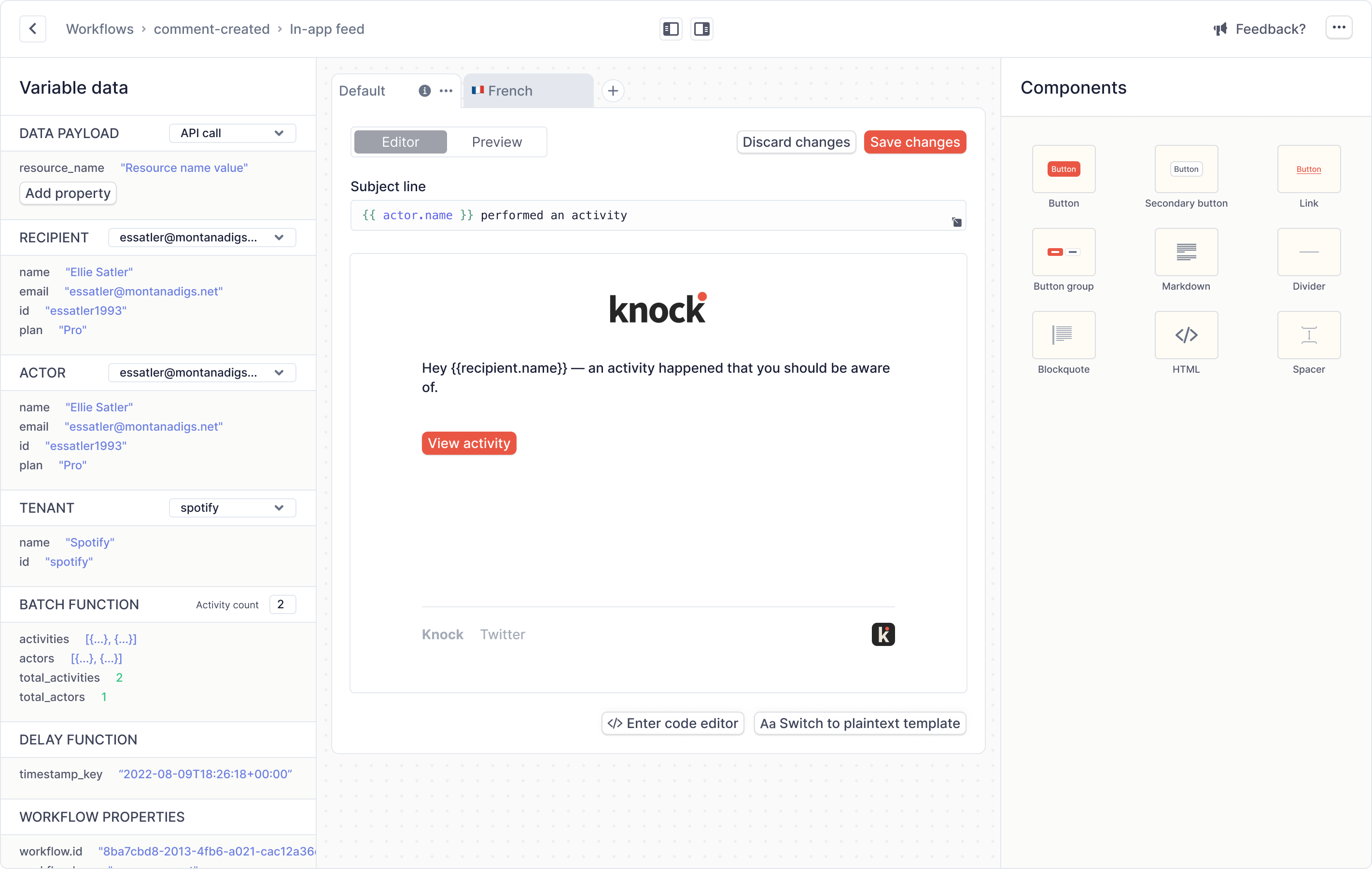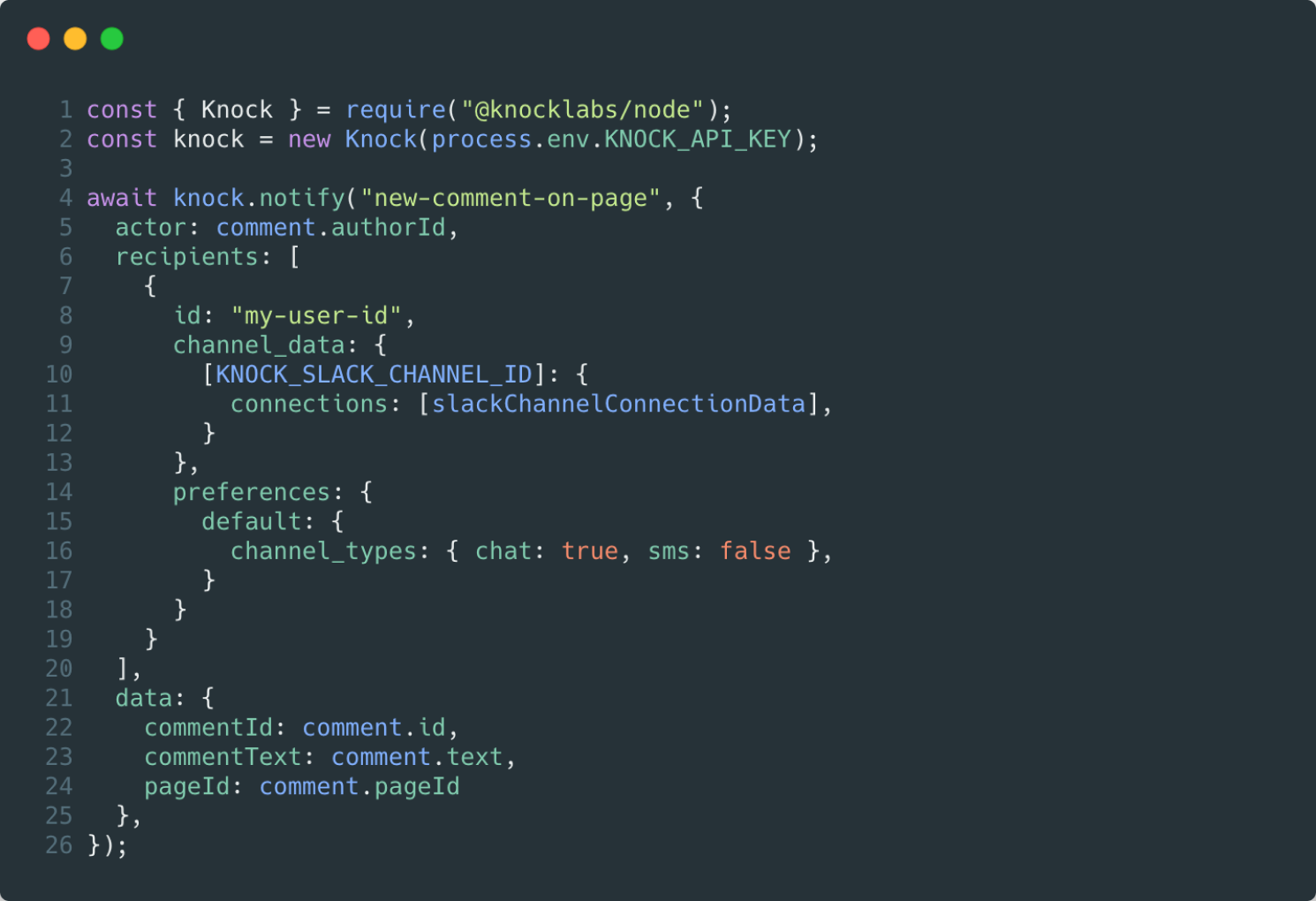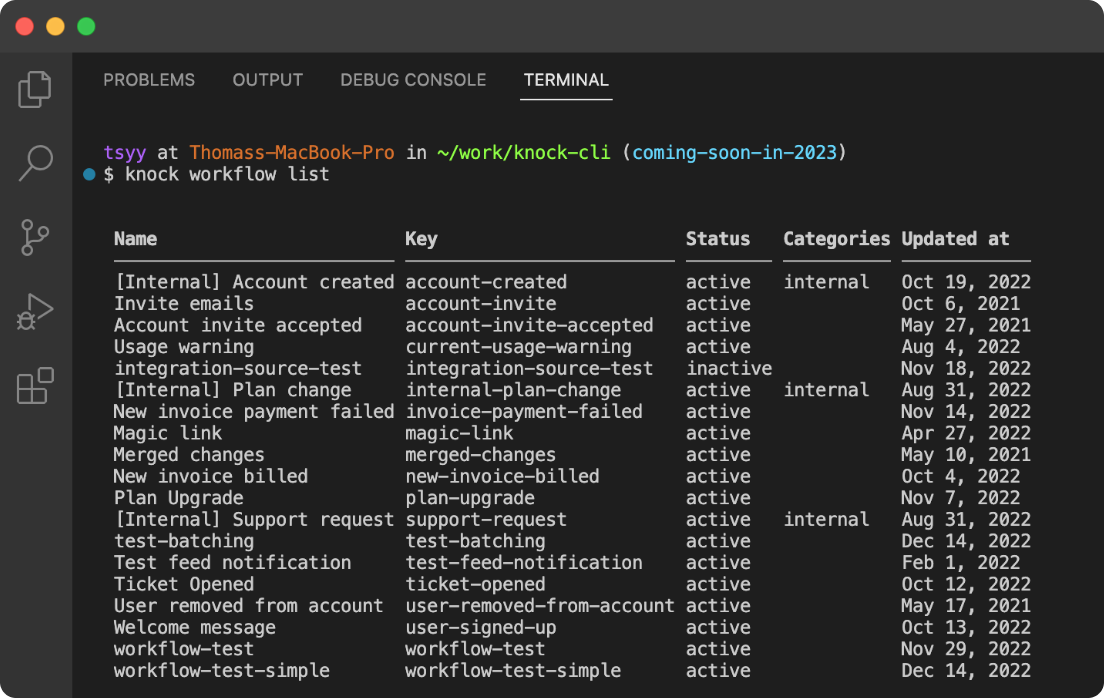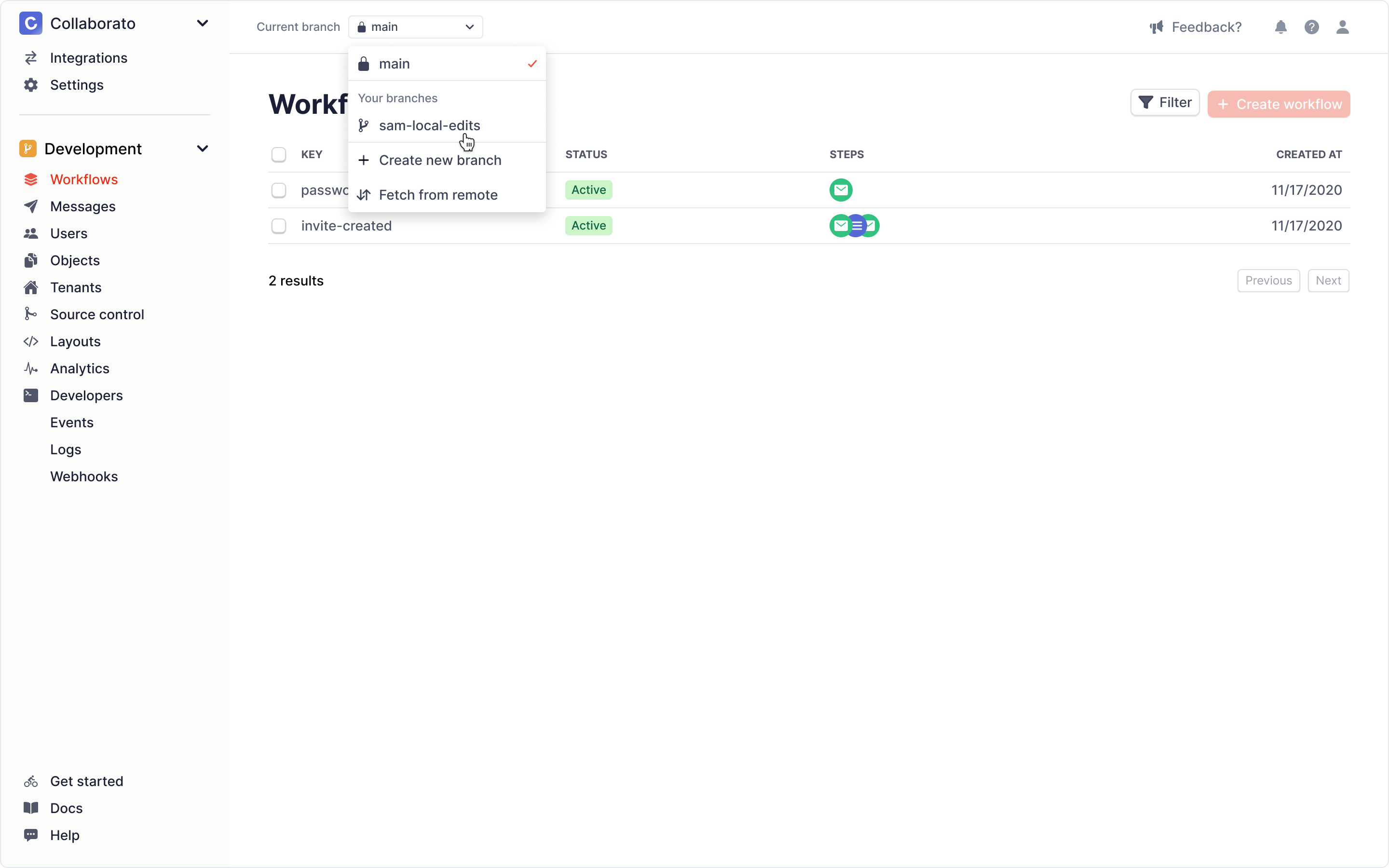2022 was a busy year for us at Knock.
We started the year with a product behind a waitlist. We had a group of select beta customers we were working with to shape the first version of the product, which was a long way from where it is today.
Now as we reach the close of 2022, we’re powering notifications for hundreds of companies and seeing enterprise organizations such as Vercel and SafetyCulture trust Knock to power their notifications in production. On top of that, we’re about to ship some of our most exciting releases yet.
What follows is a quick summary of what we saw this year at Knock, from what our customers built on our platform to what we shipped to help them do it. We also give a quick preview of what’s to come at Knock in 2023.
tl;dr: Knock exists to help software communicate with its users. To do that we equip product and engineering teams with the tools they need to power delightful product-led communication.
We provide a set of simple APIs and a dashboard that developers use to introduce thoughtful notifications into their products, without having to build and maintain a notification system in-house.
Our customers: products defining thoughtful notification experiences
At Knock, we get to see the organizations pushing forward notification experience up close. In 2022 we’ve seen more and more teams adopt Knock to power a wide range of notification use cases, all with the goal of providing a more thoughtful messaging experience for end users.
First we have those companies powering the future of collaboration. Highnote uses Knock to help users collaborate with one another on audio and sound production. Gamma uses Knock to power notifications for its nextgen approach to building decks. And Colabra uses Knock to help research labs coordinate on experiments and track progress.
Next there are developer tools such as Vercel and Modal using Knock to help their users proactively respond to usage warnings and avoid accidental charges as well as to help alert users when deployments or functions have failed and need to be fixed.
Marketplaces such as VendorPM, Hiive, and Cofactr use Knock to help connect demand with supply in realtime and complete transactions faster and drive gross merchandise volume on their platform.
There are tons of other cool use cases being powered by Knock, from Modularity powering virtual card approval workflows to SuperHi helping professionals find work with their new Bounties product.
In 2022 we learned that Knock can be used to power notifications for any product, from consumer-facing tools to enterprise tooling that’s used in critical production-grade transactions.
If you’re out there with a notification use case, we can support it with Knock. Give us a call.
What we shipped in 2022
When we started Knock, we knew we wanted to build two things: (i) a great product and (ii) a team that loves to ship value to customers, fast.
In 2022, we shipped 34 changelogs to power the notification use cases you just read about. Here are a few highlights.
The most powerful notification engine you’ll never build
In 2022 we invested in bringing more capability to the Knock notification engine to power every notification use case our customers can think of.
- A new HTTP request function for fetching data and sending webhooks.
- A revamped condition engine UX, with the ability to build notification workflow conditions off environment variables, batch counts, tenant properties, and more.
- A visual template editor for building beautiful transactional emails, with full control over CSS styling for the components used to build those emails.
- Granular batch function controls. Set dynamic batch windows with variable data, configure batch order, and more. Our batching capability continues to help teams send fewer, higher signal notifications.
- Support for 15+ new channels to use in your notification system.

Knock for enterprises
On our way to power notifications for organizations like Vercel and SafetyCulture, we shipped enterprise-ready features such as audit logs, roles and permissions, domain-based automated invite approval, and SSO as well as notification features required at larger organizations such as per-customer whitelabeling and preference defaults.
We also announced that we’re both SOC 2 type II compliant and GDPR compliant.
New API abstractions to power great notifications
We’ve continued to iterate on our API and introduce new primitives to help our customers power product notifications with Knock. Here are a few of the use cases we’ve enabled this year:
- Mute resource-specific notifications with preference conditions.
- Our objects API for modeling non-user recipients (such as Slack channels that map to resource in your product) and for handling mutable data references within your notification templates.
- Enable per-customer notification whitelabeling and preference defaults.
- Migrate to Knock in realtime with our inline identification API. Now it’s possible to identify users, set their channel data and preferences, as well as identify tenants, all within the workflow triggers you send to the Knock API. This means you can get started with Knock without needing to run any one-time migrations of user, preference, or tenant data into our system.

Inline identify users to set preferences and tenant data in realtime when you trigger a notification.
Power product notifications with CDPs and reverse ETLs
With our Knock Sources release, we enabled our customers to power notifications with CDPs (Segment, Rudderstack) and reverse ETL platforms (Hightouch, Census). This helps engineering teams empower non-engineers to introduce new notifications into their product in minutes.
Utilities for your notification system
Other highlights include:
- The Knock debugger to give our customers the same level of visibility into the Knock notification engine that they'd have if they were running a notification system on their own.
- Knock analytics to visualize notification volume and analyze engagement status.
- Outbound webhooks to trigger functionality in your product based on Knock events.
What you can expect from us in 2023
In 2022 we shipped a lot of product and, even better, learned a lot from customers and their feedback along the way. But we’re just getting started.
Here are a few themes you’ll see us continue to push forward in 2023.
Even closer integration with developer workflows
We want working with Knock as a developer to feel like working with a notification system you built in-house, just without having to build it all yourself.
With that aim, we’re in progress on three exciting releases that will push the Knock developer experience even further forward.
Knock management API and CLI
With the Knock management API you’ll be able to create Knock workflows, templates, and layouts, all via our API. This is great for use cases where you want to programmatically create template variants or workflows, or just for scenarios where you’d rather bulk update templates using your local IDE instead of the Knock dashboard.
We’re even working on a Knock CLI to make it even easier to quickly pull and push resource from your remote Knock instance.

Knock source control
With Knock source control we’ll bring Git-based branching and version control to the notification workflows and templates you build in Knock. With this release you’ll be able to manage both local and dashboard-based updates to your notification system through a remote repository. We’re super excited about this release and how it will help larger teams coordinate updates to their Knock instance.

Collaborate on branches from the Knock dashboard or your local environment.
Integrate Knock with your CI/CD pipeline
Automate Knock environment promotion and testing with GitHub Actions.
Workflow engine 3.0
As always, we’ll continue to push forward what’s possible with the Knock notification engine. In 2023 you’ll see us introduce:
- switch functions for routing recipients through different notification workflow paths based on an evaluated expression
- support for powering interactive Slack request/response behavior all within a single workflow
- a workflow schedules API for powering cron-related use cases and cross-workflow digests
- an A/B testing block for testing different notification variants within a given workflow

Build interactive Slack experiences from a single Knock workflow.
System-wide controls and intelligence
In 2023 we’ll also look to introduce a new set of controls for managing behavior across your notification workflows, from workflow prioritization to frequency caps to intelligence-based notification recommendations based on user preferences and engagement rates.
Our goal here is to help the world’s largest organizations power a notification experience that considers everything sent to a given user across the system, then sends and digests notifications based on what's most valuable to a given user.
Happy new year from all of us at Knock
To our customers, supporters, and community, thanks for continuing to be a part of our journey and believing in our purpose to help software communicate with users.
It’s been an awesome year and we can’t wait to see what 2023 brings. Until then...
Knock on 🖖